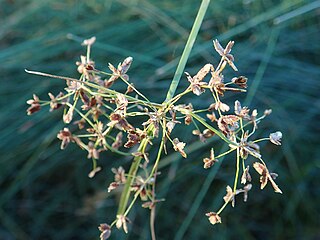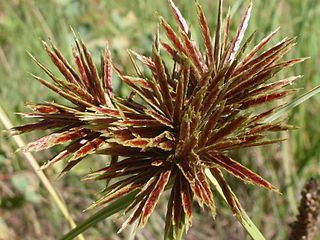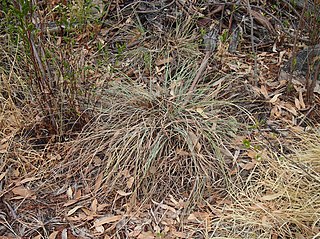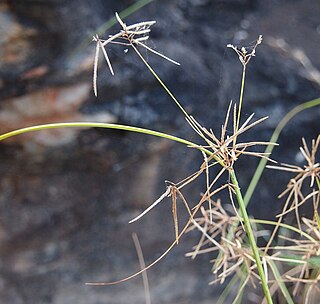
Cyperus alterniflorus, commonly known as umbrella flat-sedge, is a sedge of the family Cyperaceae that is native to Australia.
Cyperus aquatilis is a sedge of the family Cyperaceae that is native to Australia and New Guinea.
Cyperus astartodes is a sedge of the family Cyperaceae that is native to northern parts of Australia.
Cyperus carinatus is a sedge of the family Cyperaceae that is native to northern Australia.
Cyperus centralis is a sedge of the family Cyperaceae that is native to arid areas of central Australia.

Cyperus compressus, commonly known as annual sedge, is a sedge of the family Cyperaceae that has a wide distribution throughout countries with warmer climates. It is found in tropical areas of Africa, Asia and the Americas.

Cyperus concinnus is a sedge of the family Cyperaceae that is native to Australia, and found in New South Wales, Queensland, the Northern Territory, South Australia, Victoria and Western Australia.

Cyperus congestus, commonly known as dense flat-sedge or clustered flat-sedge, is a sedge of the family Cyperaceae that is native to southern Africa mostly in South Africa, Lesotho and Namibia.

Cyperus conicus is a sedge of the family Cyperaceae that is native to northern and north eastern parts of Australia.

Cyperus dactylotes is a sedge of the family Cyperaceae that is native to all of mainland Australia except for Victoria.
Cyperus gymnocaulos, commonly known as spiny flatsedge, is a sedge of the family Cyperaceae that is native to Australia.
Cyperus holoschoenus is a sedge of the family Cyperaceae that is native to New Guinea and parts of northern Australia.

Cyperus javanicus, also known as the Javanese flatsedge, is a sedge of the family Cyperaceae that is native to Indonesia and Australia.
Cyperus latzii is a sedge of the family Cyperaceae that is native to Australia, and found in the Northern Territory and Western Australia.
Cyperus nutans is a sedge of the family Cyperaceae that is native to Australia, China, India, Bangladesh, south-east Asia, Malaysia, India, and Indonesia.
Cyperus orgadophilus is a sedge of the family Cyperaceae that is native to Australia, in Western Australia, the Northern Territory, and Queensland.
Cyperus pulchellus is a sedge of the family Cyperaceae that is native to northern Australia, tropical Africa, northwest Madagascar and Southeast Asia.

Cyperus vaginatus, commonly known as stiff-leaf sedge or stiff flat-sedge, is a sedge of the family Cyperaceae that is native to Australia.
Cyperus viscidulus is a sedge of the family Cyperaceae that is native to north western Australia.
Cyperus zollingeri, commonly known as roadside flatsedge, is a sedge of the family Cyperaceae that is native to tropical areas of Australia, Africa and Asia.







